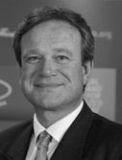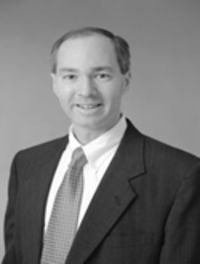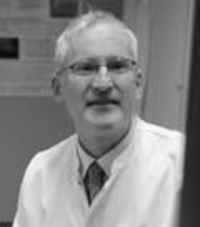Wim Oyen is Professor of Nuclear Medicine at the Department of Radiology and Nuclear Medicine, Radboud University Medical Centre in Nijmegen, The Netherlands. Prof. Oyen serves as the European Association of Nuclear Medicine (EANM) Congress Chair. EANM and HealthManagement interviewed Prof. Oyen at the EANM Congress 2014.
What are your key areas of interest and research?
My main area of interest is oncology. I have research projects in molecular imaging of various forms of cancer, and I also have a keen interest in the development of radiopharmaceuticals for experimental radionuclide therapy so that we can improve treatment of patients with cancer.
The EANM Congress 2014 featured a biology track for the first time, and the 2015 Congress will again include this track, now titled “Molecule to Man”. What will this include and who is it for?
This track highlights the basic science in our profession. It is about the development of new agents, new insights, preclinical testing and the translation to early clinical trials. That is for the nuclear medicine part, but it is also providing insights into diseases and their treatments by using molecular imaging. It is everything you need to prepare for successful clinical introduction of new tracers and new procedures.
EANM’s ReseEARch 4 Life (EARL) initiative and the European Infrastructure for Translational Medicine (EATRIS) held a joint symposium on joining forces to improve quality within translational research and clinical practice. What do you hope to gain from this?
EATRIS is a consortium of 70 academic institutions that provides a platform for high-end technology to research consortia, but also for the industry to use this technology for the development of their products and to facilitate research. As EANM deals with molecular imaging and is a major stakeholder, it is logical that we team up, because EANM has a track record of using the technology and implementing the quality through our EARL programmes. EANM can provide high quality molecular imaging platforms to the EATRIS consortium so that we can create a win-win situation by collaboration. EANM provides the additional services needed to implement nuclear medicine procedures through EATRIS.
How important is radiation protection and dose reduction in nuclear medicine?
The radiation doses of diagnostic nuclear medicine are within such limits that they are very safe, and nuclear medicine has an excellent track record in terms of radiation protection and radiation safety for its patients, but also for the people working in the profession. Nevertheless, radiation protection for our patients, the general public as well as workers in nuclear medicine remains an area in which EANM can provide knowledge, guidance and education.
What can young nuclear medicine professionals gain from attending the EANM congress?
The strategy of the EANM Board is very much directed towards young professionals. We very well realise that young professionals are our future, and that we have to pay much attention to the education of the next generation in nuclear medicine. Young EANM represents those professionals under the age of 38, who are developing their career in nuclear medicine. We try to help them not only with content, but also in how to develop a career in nuclear medicine, how to be successful in grant writing, how to set up practices etc. It will continue to be an emphasis of EANM both within the congress but also outside so that we educate and train a strong new generation of nuclear medicine physicians and scientists with an interest in nuclear medicine to prepare our profession for the future.
Is enough effort being put into research and research grants?
The research environment is becoming more and more challenging with resources becoming tighter and with the financial crisis. Budgets are under pressure everywhere. It is highly competitive to be successful in grant writing, and you see that more and more groups and consortia apply for the same call. It is becoming increasingly challenging to obtain significant grants, so the EANM made an initiative to support these groups who will use nuclear medicine procedures in their European grants for Horizon 2020 to be successful. It is not just the bright idea that counts, but it is also the way you convey a message, how you phrase it and the support with the logistics and the finances of such consortia.
We want to be proactive in this. We want our membership to be aware that we do have such a programme and that EANM supports investigators in grant writing, getting the consortia together and putting things to paper that can be successful. We do hope that many researchers will come to us and submit their proposals so that we can help to make them successful proposals.
What are the highlights of the EANM Congress for you?
The outstanding feature of the meeting is its multidisciplinarity. The multidisciplinarity within our profession: physicians, physicists, chemists, biologists, pharmacists, technologists all being together working on education and science. But also the multidisciplinarity in fostering our connection with sister societies: we have numerous guests from societies with us at the meeting who use nuclear medicine procedures, who are here as delegates, speakers and co-organisors of sessions. For me personally this is a highlight, because I think nuclear medicine can only thrive within a multidisciplinary context. We need those collaborations within our profession but especially with the outside world, with the clinical and scientific societies, to make our profession grow and to make everyone utilize the technologies that we develop in the most effective and best possible way, for patient care but also for research.
What would you like participants of the EANM Congress to take home, especially the younger community?
What I want them to take home is that the profession is very much alive, that there are significant developments. Especially for young people, the big challenge is to translate our achievements in science and translational medicine to the clinic and to make an impact on patient care for the benefit of our patients. The fact that the profession is so much alive is something that I hope everyone will pick up and take home and make use of what they have seen and learned here to make an impact in their home institutions, in their clinical practice and in their science.
Is there anything you can already tell us about what can be expected at the 2015 Congress?
The EANM committees will become increasingly involved in taking the lead to shape the programme of the congress. Their ideas, their commitment for science, for clinical research, for education will be very much at the heart and soul of what EANM 2015 will look like. We will feature the collaborations with our sister societies as we have done this year, but we will also continue to put an emphasis on collaboration within EANM, with multiple committees working together on a single topic so that we bring together groups within our profession to make a bigger impact, to share their expertise and to work on joint projects. The multicommittee tracks will be quite significant in 2015.
If you had not chosen this career path you would have become..?
In high school it was pretty much clear that I wanted to be a physician, because I found it intriguing to understand what is happening to people when they get sick and what you can do to make them better. When I was in medical school I wanted to become an internal medicine specialist. I had a great interest in endocrinology and oncology. More or less by chance, I became involved in nuclear medicine, which happened to be the discipline that fitted very well wtih my professional interests.
Was there much support for you as a student?
There was much support during my research fellowship, which was at the crossroads between internal medicine and nuclear medicine. The more I was involved in nuclear medicine research the more attractive it became to me to stay in nuclear medicine and especially in academic nuclear medicine because the research opportunities there are great.
What would you single out as a career highlight?
The career highlight is always the privilege of supervising PhD students, to guide them through his or her research project and ultimately the defence of the PhD thesis. One of my personal highlights was the honorary membership that I received from the European Society for Radiotherapy & Oncology (ESTRO) in recognition of my efforts to foster the collaboration between ESTRO and EANM. I was really very honoured that ESTRO awarded me with the honorary membership and a prestigious lecture at the ESTRO congress to commemorate it. I still have fond memories of the laudatio by Professor Gregoire who bestowed the honour on me.
If you had the choice, with whom would you like to have breakfast tomorrow?
That is a difficult question, there are so many fascinating people around. I once had the privilege of talking to Judah Folkman, a surgeon and one of the very first people who wrote about tumour angiogenesis. I had the good fortune to meet him when he was already of old age. I have not come across many people who can talk with so much passion and so much convincing knowledge about a subject as Judah Folkman. He is an example of someone who discovered very early that something you observe in your science is very important, and how to pursue a lifetime of science around that idea and making a fundamental change in how your colleagues think about the disease. I admire that very much. I spent 15 minutes with Prof. Folkman, and if I would have the chance to do that again and preferably a little longer that would be wonderful.
What would you ask him?
I would like to know what drives him, his motivation to dedicate so much of his energy and his time to science and basically what makes him think. I would be very curious to hear that.
Prof. Oyen qualified as a doctor in 1988 and obtained his PhD on radiolabeled antibodies in 1992. In 1995, after having finished his residency in Nuclear Medicine, he joined the Department of Nuclear Medicine at Radboudumc. He was appointed professor of Nuclear Medicine in 2001 and was department chair between 2008 and 2014. He served as scientific director of Radboudumc Research Institute for Oncology between 2011-2014.
In addition to his EANM office, Prof. Oyen serves on the Board of the European CanCer Organisation (ECCO). He is an Associate Editor of The Journal of Nuclear Medicine, serves on the Editorial Board of The European Journal of Nuclear Medicine and Molecular Imaging and EJNMMI Research, and acts as a reviewer for numerous scientific journals. He was responsible for joint EANM-ESTRO activities, such as the course for PET-CT training in radiation oncology (for which he was awarded Honorary Membership of ESTRO in 2009).
The EANM Congress 2015 is in Hamburg, Germany, October 10-14.




















